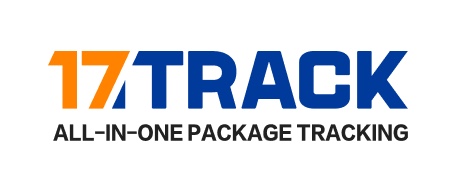The distribution service of China-Australia freight is achieved through three core links: multimodal transportation, professional operation, and digital management. It combines sea transportation, air transportation, land transportation and value-added services to form a complete chain system covering transportation, customs clearance and delivery. The specific implementation methods are as follows:
I. Multimodal Transport: Integrating Maritime, Air, and Land Transport Resources
Maritime Transport as the Mainstream
Applicable Scenarios: Bulk commodities (such as minerals, timber), industrial equipment, large-scale cross-border goods.
Operation Process:
Full Container Load (FCL) Transportation: The goods occupy a single container and are transported directly from Chinese ports (such as Shanghai, Ningbo) to Australian ports (Sydney, Melbourne), suitable for high-value or confidential goods.
Less-Than-Container Load (LCL) Transportation: Multiple consignors' goods are combined into the same container, reducing the cost of small-batch transportation, but requiring additional consolidation and distribution time.
Advantages: Low cost (only 1/5 - 1/10 of air transportation), large transportation volume, but longer transportation time (approximately 16 - 30 days).
Air Transport as a Supplement
Applicable Scenarios: High-value, time-sensitive goods (such as electronic products, fresh produce, medical equipment).
Operation Process:
Direct Flight: From major Chinese airports (such as Hong Kong, Shanghai Pudong) to Australia (Sydney, Melbourne), with fast delivery time (3 - 7 days).
Transit Flight: Through third-party airports (such as Singapore, Dubai) for transit, suitable for remote areas or small-batch goods.
Advantages: Fast delivery, but higher cost (approximately 5 - 10 times that of maritime transportation).
Land Transport as a Connector
Applicable Scenarios: Short-distance transportation within Australia or cross-border land transportation (such as from China to Southeast Asia and then to Australia).
Operation Process: Truck delivery covers the entire Australia, including commercial addresses, private addresses, and Amazon FBA warehouses.
Advantages: High flexibility, supporting door-to-door delivery.
II. Specialized Operations: Customized Services and Value-added Links
Cargo Consolidation and Packaging
Consolidation Service: Consolidating the goods of multiple consignors for transportation, reducing costs through scale effects.
Professional Packaging: Providing wooden box reinforcement, non-sterilization materials, moisture-proof and shock-proof packaging to ensure the safety of the goods.
Case: Ji Cheng Australia Logistics provides DG battery dedicated lines for sensitive goods such as new energy batteries and electric vehicles, using explosion-proof packaging and hazardous materials transportation qualifications.
Clearing and Declaration
Dual Clearing to Door: Handling export and import clearances, and handling commercial invoices, origin certificates, packing lists, etc.
Compliance Operations: Familiar with Australian customs HS code classification and tariff payment rules to avoid increased storage costs due to clearance delays.
Case: United Transportation Australia Special Line provides "Dual Clearing and Taxation" services, allowing customers to avoid handling cumbersome procedures themselves.
Warehousing and Sorting
Domestic Warehousing: Providing free warehousing (up to 60 days), supporting goods sorting, label replacement, trucking, etc.
Australian Local Warehousing: Establishing overseas warehouses in Sydney, Melbourne, etc., supporting one-stop consignment, inventory management, return and exchange handling.
Case: ChinaDivision provides Australian overseas warehouse services for cross-border e-commerce, optimizing inventory turnover and reducing the risk of unsold goods.
III. Digital Management: Full Tracking and Transparent Services
TMS Logistics System
Function: Real-time tracking of goods status, location, and estimated arrival time, supporting online ordering, freight inquiry, and electronic invoice generation.
Case: Ji Cheng Australia Logistics independently developed the TMS system, ensuring the timeliness and safety of goods transportation through visualization.
Customer Service Platform
Function: Providing 7×24-hour exclusive customer service, supporting bilingual services in Chinese and English, and promptly handling abnormal situations (such as goods damage, customs clearance delays).
Case: PolarPost of Jiu Yun Transportation communicates through multiple channels such as WeChat and email to ensure customers always have up-to-date information on the goods.
Data Analysis and Optimization
Function: Optimizing route planning, cabin reservation, and cost control through historical transportation data, improving service efficiency.
Case: ChinaDivision uses the order management software integration to help customers track packages from China to Australia, reducing delays.
IV. Typical Service Mode Cases
Door-to-Door Dedicated Line Process: Pickup at the origin in China → Sea/air transportation → Customs clearance in Australia → Delivery by truck to the destination.
Advantages: Convenient and efficient, suitable for customers who are not familiar with international logistics.
Representative enterprises: Delivery International Freight, PolarPost.
FBA Origin Service
Process: Collection from the Chinese warehouse → Air/sea transportation to Australia → After customs clearance, delivered to the Amazon FBA warehouse.
Advantages: Optimized inventory management, reduced risk of unsold and out-of-stock items.
Representative enterprises: Jicheng Australia Logistics, ChinaDivision.
Large-sized Cargo Transportation
Process: Customized wooden box packaging → Full container by sea → Customs clearance in Australia → Delivery by truck to commercial/private addresses.
Advantages: Supports transportation of extremely long, wide, and heavy equipment.
Representative enterprises: United Transportation Australia Express Line.


